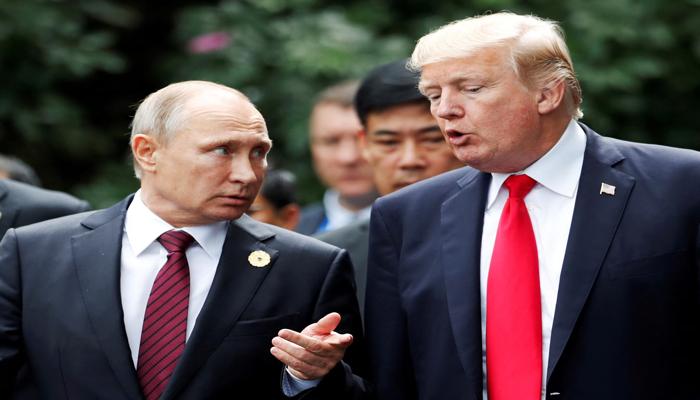The recent tariff move by US President Donald Trump has reignited global attention on the deepening tensions between Washington and Moscow. Trump announced that India would be subjected to a 25% tariff on its imports to the United States, along with additional unspecified penalty citing New Delhi’s continued purchase of energy and arms from Russia. Although the specific percentage of the additional penalty has not yet been disclosed, the announcement signals a growing impatience from the US over India’s trade relations with Russia. This measure has sparked concerns over potential diplomatic strains and economic impacts on bilateral relations.
US imports of Russian goods
While Trump is imposing penalty on India for buying Russian products, the United States itself continues to import Russian goods worth billions of dollars, despite imposing various sanctions on Russia and Russian companies. US imported fertilizers worth US$1.3 Billion from Russia during the year 2024, according to the United Nations COMTRADE database on international trade. It was $1.95 Billion in 2023 and $1.62 Billion in 2024. Therefore, while imports have come down, it is still substantial. In fact, about 50% of the fertilizers used in the US come from Russia.
Import of non-ferrous metals such as palladium and aluminium were valued at $876.5 million for the period January to November in 2024. Inorganic chemicals made up $683 million, followed by power-generating machinery at $79 million and cork and wood manufacturers at approximately $64 million.
Other commodities included nuclear reactors and machinery worth $80.81 million, prepared animal feed, iron and steel, and oil seeds, although these contributed smaller shares to the overall imports.
Donald Trump has announced he will penalise India for doing business with Russia.
This is the value goods America itself imported from Russia between Jan to November last year. pic.twitter.com/6oIrbVRXj6
— Padmaja Joshi (@PadmajaJoshi) July 30, 2025
Despite Trump opposing Russia, its reliance heavily on Russia indicates something else. Trump’s actions and statements, including his latest tariff threats and the shortening of the compliance timeline, highlight a clear shift in his approach towards Putin. His criticisms indicate disappointment in the Russian leader’s unwillingness to cooperate. After returning to the office, Trump had vowed to end the war in Ukraine swiftly. However, those efforts have not materialized.
Trump’s threat to impose secondary sanctions is already taking shape. On Tuesday, July 29, he warned that unless Russia shows signs of progress toward ending the war within the next 10 to 12 days, the US would begin implementing 100% tariffs on countries continuing to trade with Russia. This marks a drastic acceleration from his earlier 50-day deadline, which was set to expire on September 2. The new deadline now falls on August 8. “We’re going to put on tariffs and stuff, and I don’t know if it’s going to affect Russia, because he wants to, obviously, probably keep the war going,” Trump stated. His remarks reflect scepticism about Putin’s intentions and signal that the US may take even more aggressive steps if the war continues.
Trump’s stance on Russia has undergone a significant transformation. Once describing Russian President Vladimir V. Putin as “savvy” and “a genius” for launching the invasion of Ukraine, Trump now appears to be distancing himself from any peace negotiations. He stated that it would be up to Russia and Ukraine to end the war, despite having shown enthusiasm earlier in his second term about negotiating a ceasefire. Trump’s body language and recent rhetoric reflect mounting frustration with Putin, who has failed to respond positively to diplomatic overtures. On Monday, Trump voiced his displeasure, saying, “I’m not so interested in talking anymore. He talks. We have such nice conversations, such respectful and nice conversations, and then people die the following night with a missile going into a town.”
Tariff warning on China
China, the largest buyer of Russian oil, has also been warned. Treasury Secretary Scott Bessent, during a press conference in Stockholm, stated that China could face heavy tariffs if it continues its purchases of Russian oil. The pressure campaign appears to be part of a broader strategy to squeeze Moscow’s economic lifelines and force a change in course. Trump had earlier announced that Russia would face 100% tariffs if it failed to agree to a truce. His advisers have clarified that these penalties would likely take the form of secondary levies, affecting countries that import Russian oil and other critical commodities. Such measures are intended to create a ripple effect, discouraging global trade with Russia and tightening the grip of Western sanctions.
Market reactions have been swift. Oil prices surged above $69 following Trump’s reiteration of tariff threats. West Texas Intermediate (WTI) oil posted its largest gain since June, when Israel conducted airstrikes on Iran. Bullish options on Brent crude overtook bearish ones for the first time in two weeks, reflecting increased investor concern over geopolitical instability and potential disruptions in the energy supply chain.

